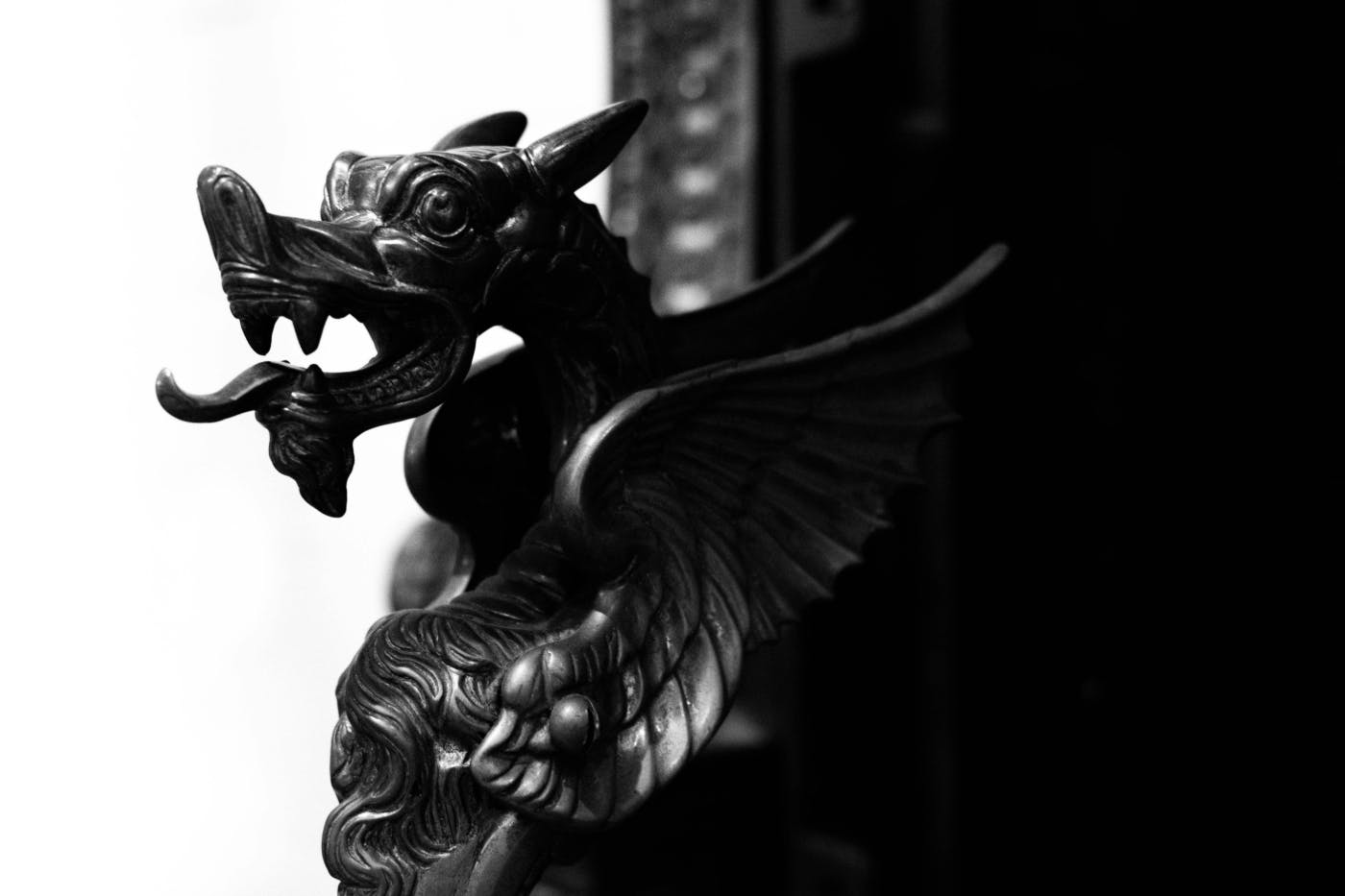
This article kicks off The Loyalty Problem: Why Brands Can’t Keep Friends, a five-part series from ThoughtLab exploring the fractured state of modern brand loyalty.
Why Brand Loyalty Is So Hard to Win (and Even Harder to Keep)
Once upon a time, a customer fell in love with a brand. They wore the hoodie. They quoted the tagline in casual conversation. They bought every product, lined the empty packaging up like trophies, and maybe even named their dog “Nike.” Okay, that last one’s not confirmed, but you get the idea.
It was romance. Not the sappy kind, but the kind built on trust, admiration, and a shared sense of identity. A brand stood for something, and if you stood with it, you felt like you were part of a club. It wasn’t just coffee. It was Starbucks. It wasn’t just shoes. It was Converse. You didn’t just buy the product—you bought the story, the attitude, the cool factor that came baked into the logo.
Fast-forward to now, and the vibe is... different. Customers don’t fall in love; they comparison shop. They don’t stay loyal; they stay alert. One price hike, one tone-deaf tweet, or one slightly awkward TikTok from your CEO, and that long-term relationship turns into a “Hey, it’s not you... it’s me (and your increasingly sketchy return policy).”
We’re not living in the age of loyalty anymore. We’re living in the age of cautious alignment. Customers will stick around—if you make it worth their while. But they’re not handing out brand devotion like candy, and they’re definitely not doing it just because your website has a friendly tone and an eco-conscious footer.
So if you’re a brand scratching your head and wondering why it’s so hard to keep customers coming back, you’re not imagining things. The game has changed, the rules are fuzzier, and the players? They’re a lot less forgiving.
This article kicks off The Loyalty Problem: Why Brands Can’t Keep Friends, a five-part series from ThoughtLab exploring the fractured state of modern brand loyalty. We’ll dig into what’s gone wrong, what still works, and how brands can stop chasing gimmicks and start building genuine, lasting relationships—without resorting to bribery or emotional manipulation.
Let’s start by unlearning the fantasy: the myth of the loyal customer.

The Myth of the Loyal Customer
For years, the loyal customer has been held up as the holy grail of marketing. Entire campaigns, budgets, and CRM systems were built on the assumption that once a person fell for your brand, they’d stay with you for life—through price hikes, website redesigns, and even questionable rebrands. It was the kind of loyalty you’d expect from a childhood friend or a favorite pizza place that never skimps on toppings.
But let’s be honest: that version of loyalty was always a bit... idealized.
Loyalty, in the old model, was less about emotion and more about limitation. We like to remember it as devotion. But in reality, it was often just inconvenient to leave. There were fewer choices. Less information. No app to compare twenty brands in five seconds. If you liked Brand A, it wasn’t necessarily because Brand A was the best—it might’ve just been the only one you could easily access.
And sure, there were a few brands that captured something deeper. Apple turned customers into advocates. Harley-Davidson tattooed its way into hearts (and skin). But those were exceptions, not the rule. Most brand relationships were more about habit than passion. We used what was familiar. What was available. What didn’t give us a reason to leave.
Now, let’s drop that into 2025.
Customers have options—too many, in fact. They’re no longer loyal out of habit or hardship. They’re loyal (if at all) because a brand aligns with their values, delivers consistently, treats them like they matter, and doesn’t make them feel like a revenue stream with a first name.
Modern loyalty isn’t built on the back of product features or catchy slogans. It’s built on emotional resonance. On trust. On the feeling that, “Hey, this brand gets me. And they haven’t disappointed me yet.”
That’s a taller order than ever before.
Loyalty now has prerequisites:
- Is the experience seamless?
- Is the brand ethical?
- Are they walking their talk?
- Do they understand me, or are they just targeting me?
- Can I trust them with my data, my time, my expectations?
And if the answer to any of those is “meh”? Loyalty evaporates faster than a follow on Threads.
The truth is, customers can still be loyal—but it’s not a default setting. It’s something that must be earned, repeatedly, without shortcuts. And more importantly, brands have to stop assuming loyalty is there just because someone follows them on Instagram or once bought a t-shirt on sale.
This isn’t a love story. It’s a performance review.
The Loyalty Landscape in 2025
Let’s be clear: brand loyalty hasn’t vanished. It’s just evolved into something leaner, meaner, and far more demanding. In 2025, loyalty doesn’t come in the form of gold-tier status or email open rates. It comes in the form of attention—and attention is harder to hold than ever.
We’re living in an age of hyper-choice. Want organic shampoo? There are fifty brands, each with its own eco-mission, influencer partnership, and pastel label. Need new running shoes? The algorithm already knows. You’ve got options before you’ve even finished typing "runni—". Customers are not just spoiled—they’re saturated. Decision fatigue is real. And loyalty often gets lost in the flood of “pretty good” alternatives.
Add to that a culture that rewards speed, convenience, and short-term dopamine over long-term satisfaction. We’ve trained ourselves to chase the next best thing, whether it’s a faster shipping window or a shinier UX. Brand relationships are increasingly transactional: what can you give me now? If you’re not delivering, someone else will—probably with a 20% discount code and a carbon-neutral promise.
But here’s the deeper issue: brands are no longer just competing with each other. They’re competing with the last great experience a customer had—whether it was a seamless checkout process, a surprisingly good chatbot, or an app that let them reschedule an appointment with two taps and zero hold music.
Loyalty is now relative. If your experience doesn’t measure up to the best thing I used this week, then why should I commit?
The other elephant in the room is trust. Or rather, the steady erosion of it. Between data breaches, shady retargeting tactics, greenwashing, and corporate statements that sound like they were generated by a guilt-ridden PR bot, customers have learned to be skeptical. Rightfully so. Trust is now a precious commodity—and without it, there is no loyalty.
Then there’s the attention economy. Your brand isn’t just competing with other brands. It’s competing with memes, microtrends, breaking news, emotional burnout, and a five-minute cooking video promising to change someone’s life with chickpeas. You’ve got seconds to prove you’re worth the headspace. Fail to connect, and your message gets the dreaded “scroll past and forget” treatment.
Oh, and personalization? It's a double-edged sword. Get it right, and it feels like magic. Get it wrong—and you’re that weird ex who still calls you by the wrong nickname.
To earn loyalty in 2025, you need to thread the needle between seamless delivery, ethical alignment, digital trust, emotional relevance, and not being annoying. It’s possible. But no one said it was easy.

Are Brands to Blame? (Sometimes, Yeah)
If customer loyalty is in freefall, it’s tempting to blame the customers. “People are flaky now.” “No one wants to commit.” “Everyone just chases the best deal.” Sure, there’s some truth to that—but let’s be honest: brands haven’t exactly made themselves easy to stick with.
A lot of the loyalty erosion happening today? It’s self-inflicted.
Take the obsession with new customers. Too many brands roll out the velvet rope for first-timers while leaving their long-time customers standing in the rain. Welcome bonuses, deep discounts, free swag—but only if you’ve never bought from us before. It’s like watching your best friend get dumped, and the ex immediately gets invited to a weekend spa retreat. It doesn’t feel great.
Then there’s loyalty theater—programs that act like they’re rewarding commitment but mostly just waste everyone’s time. Five points for opening an email, ten for following on social, maybe a free keychain after 900 interactions, and a blood sample. The language says, “We value you,” but the system says, “We’d like to trap you in a feedback loop of increasingly desperate engagement metrics.”
Personalization doesn’t always help either. In theory, it should make customers feel seen and understood. But too often, it’s a clumsy copy-paste job that manages to feel both intrusive and impersonal. “Dear [First Name], we noticed you haven’t bought socks in a while…” Yeah, there’s a reason for that, Greg.
Worse still is the performative care. The mission statements that ring hollow. The recycled messaging about “community” and “values” that feels less like a belief system and more like a branding exercise. Customers aren’t falling for it anymore. They want receipts. They want action. And they want to feel like they’re more than a revenue source with an email address.
So yes, some of the blame falls on brands. Not because they’re trying to get it wrong, but because they’re still playing by rules that no longer apply. Loyalty can’t be bought. It can’t be gamified. And it certainly can’t be assumed.
It has to be earned, re-earned, and treated like something fragile—because in this climate, it absolutely is.
A Loyalty Crisis or a Reality Check?
So, is this really a loyalty crisis? Or is it just the long-overdue reality check brands didn’t see coming?
For decades, companies operated under the comforting illusion that once a customer was “theirs,” they’d stay put. Toss out a rewards card, slap a friendly tone on your packaging, maybe remember their birthday with a 10% discount—and boom, lifetime loyalty. But in truth, what we often called “loyalty” was just a lack of better options.
Customers weren’t loyal. They were cornered.
And now that the walls have come down—now that every brand is a scroll away and convenience is king—it’s become clear just how conditional that “loyalty” really was. Customers were never signing long-term emotional contracts with your brand. They were just making the best choice available in a limited marketplace.
In other words: loyalty isn’t dying. It’s being revealed.
Revealed as something that isn’t a given. Revealed as something you can’t manufacture with enough emails, points, or promotional days. Revealed as something rare—because in a world full of shiny objects, fleeting attention spans, and unlimited alternatives, what’s truly scarce is consistency. Sincerity. Follow-through.
And those are the new building blocks of real brand loyalty.
This isn’t a crisis. It’s a correction. A course adjustment. And for the brands that understand this shift, it’s actually a huge opportunity. Because while the bar has been raised, so has the potential for meaningful connection. When customers do find a brand they can count on—one that aligns with their values, speaks to them like a human, and delivers what it promises—they take note.
They may not pledge undying devotion. But they’ll come back. Not because they feel trapped. Not because of a loyalty gimmick. But because they genuinely believe there’s something worth staying for.
And in this environment, that belief? That quiet, voluntary decision to return? That’s as good as love.

Summing Up
Let’s call it what it is: the idea of the naturally loyal customer is a myth—one that brands have leaned on for far too long. In a world where everything is optimized, personalized, and relentlessly promoted, customers aren’t clinging to brands because they feel emotionally connected. They’re scanning for value, relevance, and trustworthiness. And the second that slips? So do they.
The truth is most loyalty programs were never loyalty builders. They were just incentives dressed up as relationships. What’s different now is that customers have become much better at spotting the difference. They've heard every “we care about you” tagline. They've been offered the same 10% off a hundred times. They’ve been called “part of the family” by brands that would ghost them over a single chargeback dispute.
So no—this isn’t a loyalty crisis. It’s a loyalty correction. A shift from blind allegiance to earned attention. And that shift is long overdue.
For brands, that means playing a different game. One where you don’t get credit just for existing or showing up once in a while with a shiny offer. You have to be relevant. You have to be human. You have to be better than “meh.”
Yes, the bar is higher. But the brands that clear it? They don’t just gain customers. They gain advocates—people who stick around not because they’re locked in, but because they genuinely want to be there.
Loyalty isn’t gone. It’s just evolved. And the brands that evolve with it are the ones we’ll still be talking about five years from now.
What’s Next
Now that we’ve torn down the myth and faced the music, where do we go from here?
Next up in the series: the difference between real loyalty and loyalty theater. Spoiler alert—it’s not about your punch card. We’ll dig into why so many brands confuse retention tactics with emotional connection, and how that mix-up can turn even the most promising relationship into a one-sided performance.
Stay tuned. We’re just getting warmed up.

